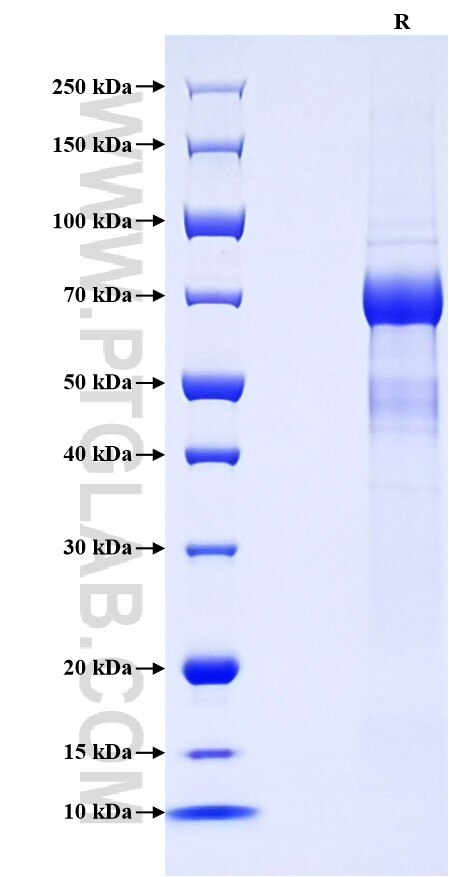Recombinant Human IGFBP3 protein (rFc Tag)
Species
Human
Purity
>90 %, SDS-PAGE
Tag
rFc Tag
Activity
not tested
Cat no : Eg1827
Validation Data Gallery
Product Information
| Purity | >90 %, SDS-PAGE |
| Endotoxin | <0.1 EU/μg protein, LAL method |
| Activity |
Not tested |
| Expression | HEK293-derived Human IGFBP3 protein Gly28-Lys291 (Accession# P17936-1) with a rabbit IgG Fc tag at the C-terminus. |
| GeneID | 3486 |
| Accession | P17936-1 |
| PredictedSize | 55.0 kDa |
| SDS-PAGE | 65-80 kDa, reducing (R) conditions |
| Formulation | Lyophilized from 0.22 μm filtered solution in PBS, pH 7.4. Normally 5% trehalose and 5% mannitol are added as protectants before lyophilization. |
| Reconstitution | Briefly centrifuge the tube before opening. Reconstitute at 0.1-0.5 mg/mL in sterile water. |
| Storage Conditions |
It is recommended that the protein be aliquoted for optimal storage. Avoid repeated freeze-thaw cycles.
|
| Shipping | The product is shipped at ambient temperature. Upon receipt, store it immediately at the recommended temperature. |
Background
Insulin-like growth factor binding protein 3, IGFBP3, is an N-linked glycosylated, phosphorylated, secretory protein with known antiproliferative and pro-apoptotic functions. IGFBP3 belongs to a family of high affinity insulin-like growth factor (IGF) binding proteins, which function to sequester extracellular IGF-1, preventing IGF-1 activation of the insulin-like growth factor receptor, IGF-1R. IGFBP3 is highly expressed in the endometrium and at the maternal-fetal interface in multiple species, including humans. In a mouse embryo coculture system,IGFBP3 was found to be secretedby endometrial cells that promote embryonic developmentby enhancing the effect of IGF.
References:
1. Linder, Markus et al. (2018). Cell death and differentiation. 1094-1106. 2. Luo, Jin et al. (2020). FASEB journal . 15462-15479. 3. Seo, Ji A et al. (2020). Nature communications. 2024. 24 4. Yaqoob, Usman et al. (2020). Cellular and molecular gastroenterology and hepatology. 545-559.

